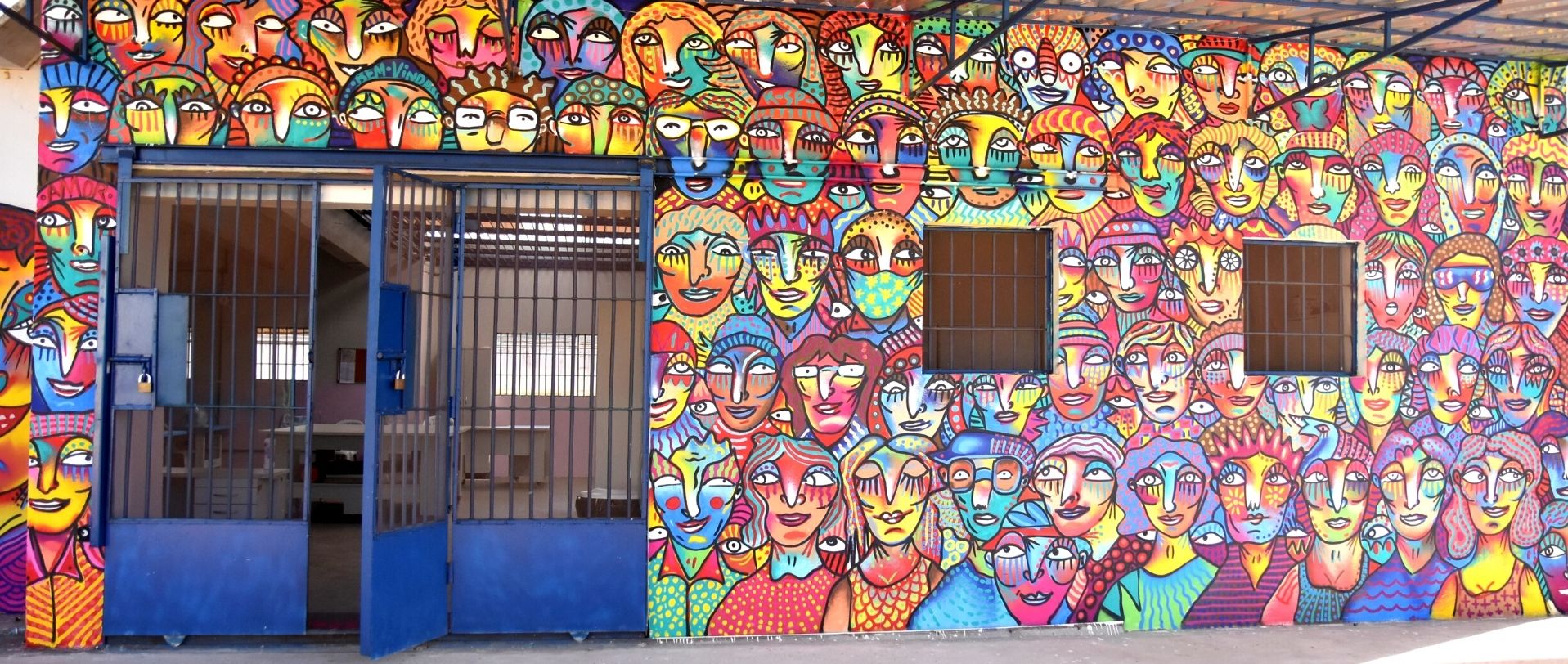The artist Guilherme Kramer was invited to give color to the facade of the Cuxá Cooperative at the São Luís Women’s Penitentiary Unit, in Maranhão. On a social media post,, the artist says he understood that it was more than a job, it was a call. “In the middle of the pandemic, one of the most intense and rewarding works appeared: it was a call! The courage to paint and transform this space spoke louder. And this space also transformed me, it is impossible to leave the same person after all this process.”
For the work on the Cuxá Cooperative’s mural, the proposal was to use colors and various faces as an opportunity to, as the artist said, bring the richness of Brazilian streets — so vivid, so full of human expressions — into that space of isolation. “We decided that we were going to make a colored panel, so that the colors would also have a therapeutic aspect, a chromotherapy. The idea was to bring about the faces, collective memories, the notion of cooperative, people coming together for the common good. For people who can’t go out on the street, having this variety of textures and faces and expressions seemed interesting to me,” says the artist.
The work took about 15 days and mobilized the entire milieu. The artist says everyone around him was involved with the work process and related to what was being developed. “Art is a flag. From the moment you are doing a job like this, a lot of things disarm and speed up human relationships. The agents who passed by have already become friends and got hyped up with the work. It turned the milieu around, from the construction workers (who were imprisoned men on a semi-open regime) to the cooperative members, to the agents, to the guys who patrolled the place. I think it made the atmosphere lighter.”
During the time he was working, Kramer lived a moment that he shared on social media, naming it “the portrait as a mirror”. “On the second day, I had already given the painting a face and one of them called me and said, ‘Will you paint me?’. Then I spoke with the coordinator and we did a portrait session. I started painting her and then all of theml gathered around me. And it was on. It became a party, they laughed, they had fun, and some didn’t see themselves in the portrait. ‘But it’s just like you!’, the others confirmed. I signed it, put their names on it and we took some pictures. And then, when they were gone, the coordinator came and told me there was no mirror in the penitentiary. I almost fell back. We gave them the opportunity to look at and think about themselves. It was very beautiful, incredible, I was thrilled on the spot.”
The process of building and making the mural was valuable for all parties involved: the artist, the cooperative members, the teams that work for the Humanitas360 Institute and the UPFEM. “The human being wants to be moved by something. The level of violence that everyone has experienced there does not mean that you need to be pruned from everything. It has to flourish again,” says Kramer. Kramer’s work will continue to color the entrance of the Cuxá Cooperative and inspire the cooperative members in their journey of learning and transformation.





